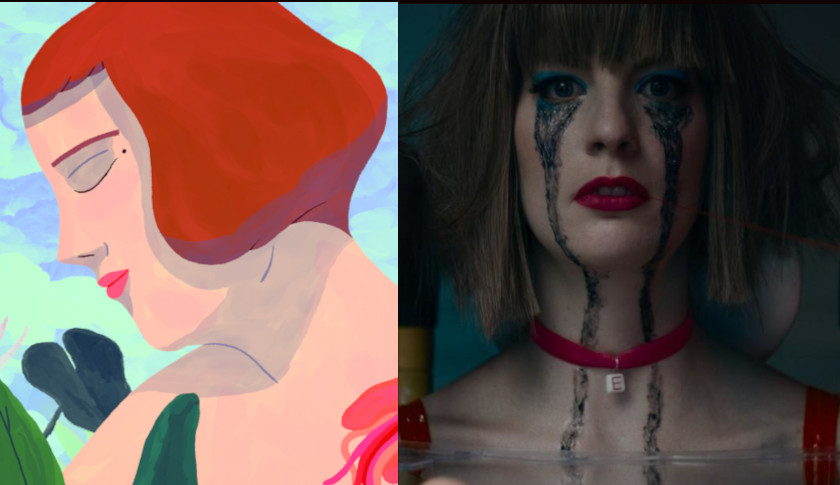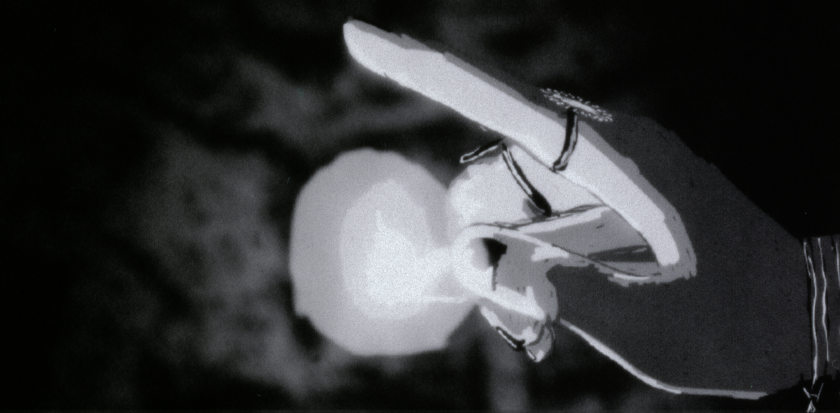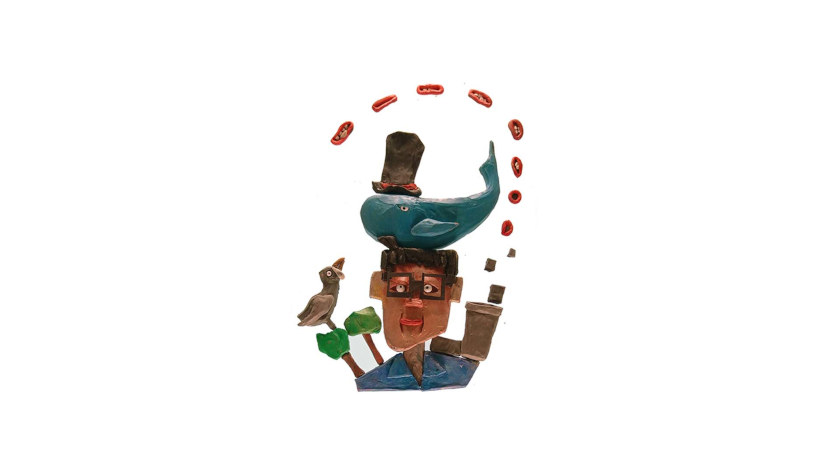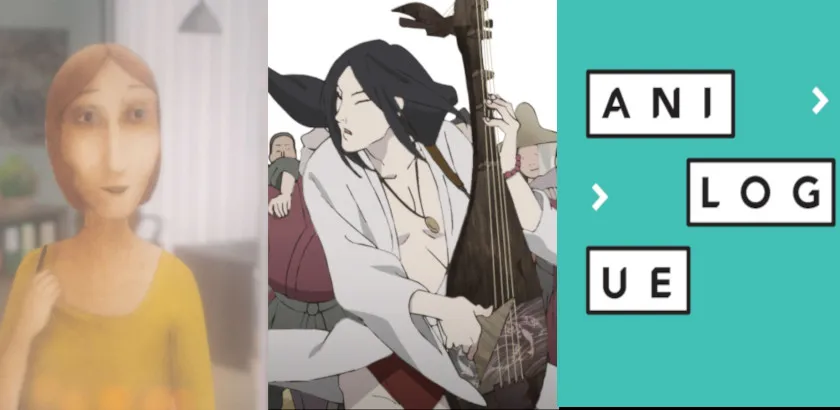Pushing Everyone To Find their Own Voice: Michelle Kranot Talks About Anidox: Lab Training Programme
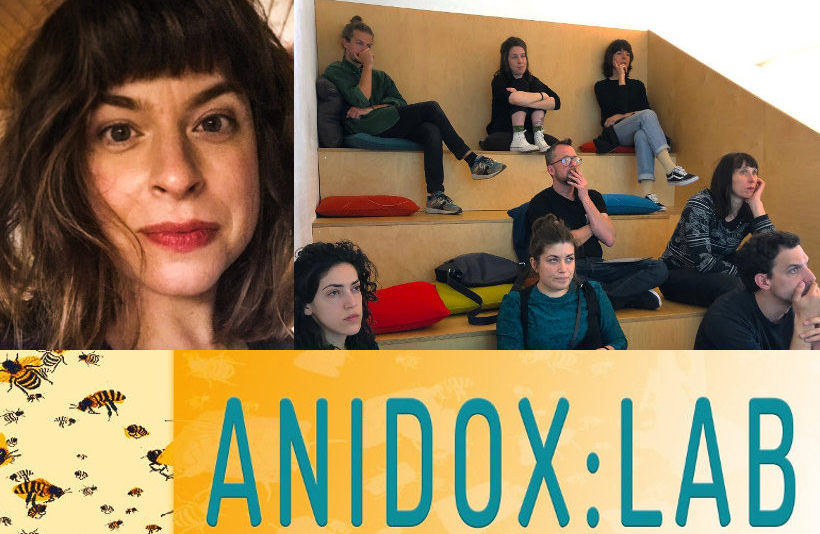
Michelle Kranot and Uri Kranot are well-known in the independent animation community, with acclaimed works like Hollow Land (2013), Black Tape (2014), How Long, Not Long (2016), Nothing Happens (2017), Suggestion of Least Resistance (2019/2020). During the latter years and works, an interest for emerging media (AR, VR for instance) has fueled their short animated work.
Less showy, but equally important is the work they both accomplish leading the Anidox:Lab training event (hosted and organized by The Animation Workshop The Animation Workshop /via University College, Viborg, Denmark). Anidox: Lab is an annual training event in two modules that helps both animation directors and documentarians develop their animated documentary projects, with both group and individual project consultation, in-situ and online.
Now in its 9th year, Anidox: Lab has hosted projects that became exceptional works like Ülo Pikkov's Letting Go, Soetkin Verstegen's Mr. Sand, and Martina Scarpelli's Egg. The 2020 call for entries is currently open (deadline: 20 Feb). We invited Michelle Kranot to clarify both the concept, the practice and the work being done during the Anidox: Lab event.
ZF: How was Anidox: Lab created?
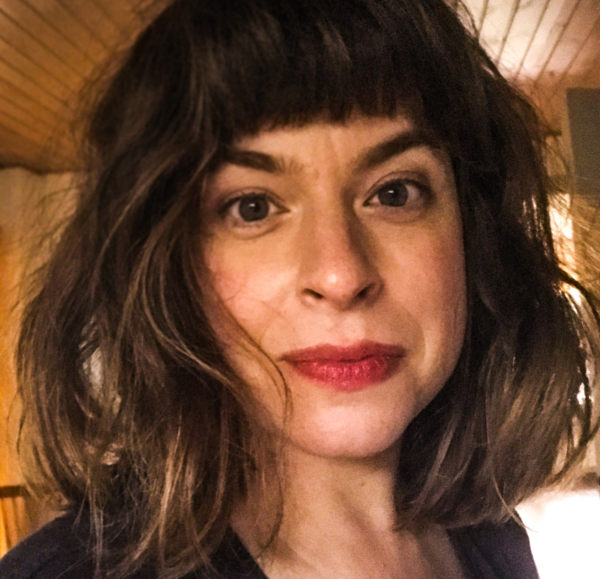 MK: It has a quite interesting backstory. As opposed to other professional training schemes, ours is very much practice-based, and linked to the career path Uri and I are linked on - it is a part of us. We share our practices, our resources and our research, and the kind of scheme that we came up with is a peer-based learning rather than a scheme where we just deliver results.
MK: It has a quite interesting backstory. As opposed to other professional training schemes, ours is very much practice-based, and linked to the career path Uri and I are linked on - it is a part of us. We share our practices, our resources and our research, and the kind of scheme that we came up with is a peer-based learning rather than a scheme where we just deliver results.
Still, we do have quite remarkable results from participants who have been through our lab (even though we should advertise them better!). Feature films have been fully produced, shorts, and TV series via the Anidox:Lab training programme. As anyone in the animation world knows, results are not immediate, and it does take a long time from the project in its development phase (which we support) to its actual distribution and festival visibility.
For us, encounter with our participants is always a part of what we do. It started out when Uri and I as artists created what would then be considered as animated documentaries. We were doing masterclasses and workshops; and then the opportunity to collaborate with The Animation Workshop came up. Since then, Anidox has been under the umbrella of The Animation Workshop.
ZF: What do you think is so distinctive about making animation documentaries? What is the impulse of the filmmakers doing this specific kind of film?
MK: The word 'impulse' is crucial. What drives people to the documentary is the element of truth. People who come from the realm of animation are seeking that, whereas people from the documentary world are seeking new ways to express depth. So, we discourage applicants who have an idea of using animation as a decorative theme, because animation is 'cool', 'trendy', or 'it will give their documentary an edge'. We can prove that animation is a craft that is not only laborious and costly, but also really needs to be justified. In fact, our introductory Copenhagen module is for participants to justify their choice of the media.
ZF: I wouldn't say there is one specific way to do the perfect animation documentary. Would you agree with that statement?
MK: I absolutely agree. There isn't a blueprint. Everyone who comes to us expects that, especially since we cross over between different media, and the main focus of our lab is to expose people to emerging media. I don't only mean VR, but new kinds of media for storytelling in general -not necessarily linear but multi-platform storytelling.
So, we encourage people to deconstruct ideas rather than follow a blueprint. And we'd like to select projects that have a challenging element in the storytelling and not only in technique. Sometimes, we even help to steer participants away from animation, if that's valuable for their project. If a person comes with an idea for an animated documentary, but they quickly discover that perhaps the animation element is unnecessary - we're there to help them as well.
ZF: What kind of applications you receive, and what are the criteria for selection?
MK: We are targeting professionals, both animation directors (not necessarily animators) and documentarians, people who work in the documentary field. We are targeting filmmakers and artists who work towards cross-media. We are geared towards working with professionals: a participant could be a person who has a certain kind of practice, and wants to make a career/project shift. Or perhaps they have the experience of making one kind of film (animation or documentary), and want to acquire a new focus in their work. They are experienced filmmakers, they tend to be educated in filmmaking or the arts.
We'd like to take 50% animation directors and 50% documentarians. We'd like to have diversity backgrounds, diversity of stories. It sometimes is really a big challenge for a course organizer to have participants with many differences in their backgrounds and their approach. But this makes it really interesting for us. Very young participants injects a kind of an energy, whereas an older participant has a lot of experience to share.
ZF: We'd like to hear more about the structure of the course and its two modules, the introductory one in Copenhagen and the week-long module in Viborg.
MK: Anidox: Lab is not reserved strictly for projects in development. We try to give in the introductory module a broad overview of animated documentaries in general, including a history of animated documentaries, and trends in animated documentaries. Following the participants' presentations, we'd also like to show examples that are relevant for them.
Subsequently in our workshop, we make people work in teams: they work together. That's where the peer-based learning comes in. They're really using each other's resources. We have external tutors who do one to one consultations parallel to the workshop. And we have consultants from the Danish Film Institute, the Swedish Film Institute, producers who work in the field. People who are not only trained and give feedback to a variety of projects, but can also be very specific for an individual, and do it really quickly. So, the first module gives the participants a key to move on with their work.
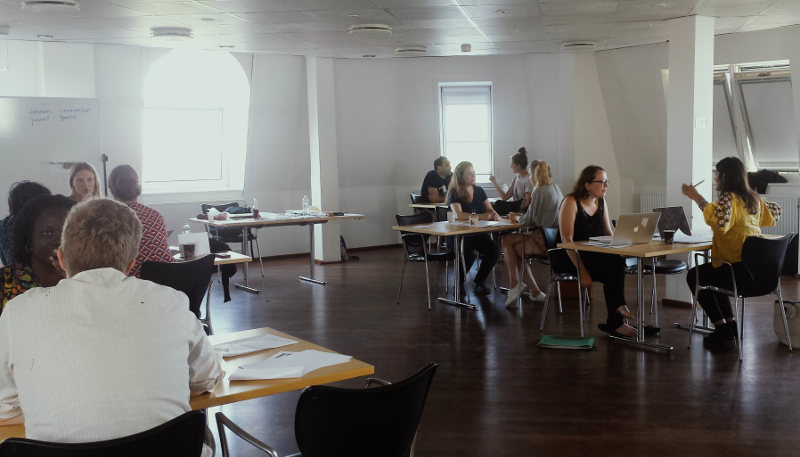
Anidox:Lab participants
Between module one and module two, we provide online consultation. Participants send us materials, and we figure out to whom they should talk to: it can be either the script consultant or they may need to focus more on the visual development. This is followed by a series of online deliverables by the participants. In Module 2 (Viborg), directors team up with an animation professional in Viborg to further develop their work
It is important for us to cultivate group dynamics, and to have participants get both attention as teams and as individuals. Sometimes, participants already come to us as teams and they may have different individual needs, even though it's the same project. So, that's why we'd like to call it a tailor-made workshop, because every project and every participant in the project is different -and we adapt to what they need.
ZF: What the number of project you select, and which end results you expect from the participants after they finish their training?
MK: Every project is different. We take between 8-10 projects, depending on the focus. Sometimes, the number of participants varies, for a director may come along with a scriptwriter or an animator. Introductory Module 1 lets the participants decide where they want to take their project up to Module 2. In Module 2 (Viborg), directors are matched with our animation professional (there is a number of boutique companies in our creative environment), and they both work together to lay the groundwork for a project teaser trailer. So, perhaps a participant has been matched with an animation professional to make an animatic for their project. The teams don't necessarily complete their teaser trailer in Viborg, but they do lay the groundwork for that.
One month after the Anidox: Lab programme ends, we'll have people deliver a teaser trailer and a kind of a pitch package. This would be mostly geared towards projects who want to contact a producer, pitch them their idea (and have enough visual material to justify and present the project) in a very specific way: "this is what I want to do".
Some projects come with a full treatment, and they already have a pitch package. Other projects that come to us already have a producer and development funding attached. Other participants have just an idea, an one-liner and an image that sparks inspiration; we really try to cater to all those very different needs. The bottom line is that people deliver between a one-minute and two-minute teaser trailer (whatever that means to them) as a kind of pitch package which includes synopsis and visual materials. That's what we help them achieve.
ZF: How do you actually select your Anidox: Lab experts?
MK: We are targeting experienced professionals. Anidox: Lab is structured in a way that works for the individual project. It's not a forum and it's not a scheme for upcoming and emerging talents. The way that modules are spread out and the timing (1st Module: 6-8 April, 2nd Module: 10-14 August 2020) is also accommodating for professionals who also have their daytime jobs, family responsibilities etc, so we structured it that way.
ZF: How many application do you get per year, and how do you choose between them?
MK: We get more than one hundred applications, and about half of them are 'qualified' applications. And it's interesting to me when I go through them, though we have an external selection committee who make the final decisions. The people who stand out are the ones who have, first of all, a strong story. No matter what your background and proposal is, if your story is strong, it will stand out. And there are other advantages; for instance, your feasibility of coming to Denmark. If you don't think you can be committed to come and attend the workshop, this is not useful for the application. Reversely, if you're applying from a remote place but you are dedicated to make the travel, that's a thing that could strengthen your application. Diversity is also a factor, and we are very happy to receive applications both from young and established directors, from duos and teams. So, for an application to qualify for selection, there is a number of factors. Yet, after so many years, it still feels like a passion project for us.
ZF: Anidox:Lab is not the only scheme you conduct at The Animation Workshop. Can you tell me the difference between Anidox: Lab and the Anidox:Residency scheme?
MK: The Anidox:Lab is aimed towards developing new work. The Anidox: Residency continues to support that development. It would normally be the next phase, where people would either make their teaser trailer or their film project -which was exactly what Martina Scarpelli (Egg) did and Soetkin Verstegen (Mr. Sand). Ülo Pikkov as well (Letting Go), received a quite big grant through Anidox: Residency. Rachel Gutgarts participated in our Lab, and then she was awarded the Residency to actually make develop it further. And she made her teaser trailer here.
I think that's another thing what makes the Anidox: Lab attractive.
Depending on the funding scheme, we offer different residency plans. When there's enough funding, we do an open call. This year, and also because Anidox: Lab is also focused on VR, we joined forces with the Anidox:VR scheme; we decided to use the Anidox: Residency as an award for the Anidox: VR competition. While the Anidox: VR competition is meant to be for completed works, we do offer one residency to an Anidox:VR awarded project, in order to develop a new work. A second resident this year will be Ula Sowa, who was participating with her project Swarm in the 2019 edition of the Anidox: lab.
ZF: I'd like to know more about the practical aspects of training, the tuition fee and scholarships for Anidox: Lab, and how you can get a scholarship.
MK: There's a tuition fee of 500 EUR for the programme, excluding accommodation and travel expenses. And we do offer a number of (partial) scholarships to cover accommodation in Viborg. In the past, we had funding from Creative Europe Media, and our eligibility criteria were quite strict. But this year and the following ones we have a focus on the Nordic countries, due to our partnership with the Nordic Cultural Fund. It gives us more flexibility. Our partners are Denmark, Norway, Sweden, Finland, but any of the Baltic countries would constitute a very special focus for us as well.
The criteria for scholarship would be evidence that you actually sought out funding elsewhere. So, you need to actually seek support elsewhere for participating in Anidox:Lab (and be able to demonstrate that); I think that creates a motivation. If you have been active seeking out support (even if you didn't get it), then you're much more likely to be eligible for a scholarship. It's not compulsory for you to be located in the Nordic region, but it could help because of our year's focus on Nordic regions and the support it provides.
ZF: How Anidox:Lab has developed throughout the years?
MK: The core team is the same. Uri and I lead it. Uri has the role of the main tutor, and I am the producer. The head of the Department, Tim Leborgne, is much involved, and our administrative team has become much stronger; so Uri and I are focused more on the participants and their projects than running the whole thing.
Our experience and the way Anidox: Lab has changed has a lot to do with the support we received from partners, like the Danish Film Institute and the Swedish Film Institute, so we can really rely on them. Their long-term engagement has proven to be very supportive of the projects. In that sense, it changed because we were a lot more confident about the sustainability of our programme.
We now have Anidox showcases at Fredrikstad Animation Festival, Turku Animation festival, Viborg Animation Festival, Miradasdoc in Tenerife, Gothenburg Film Festival. In addition to our traditional partners CPH:DOX and Nordisk Panorama.
And, of course, they are the projects themselves which make it into finished films (and it makes me feel proud when I see the Anidox:Lab in the film credits). For instance, in the 2019 edition we had outstanding projects: Rachel Gutgarts and her 2019 Via Dolorosa, Ula Sowa from Poland is making Swarm, a VR animated documentary that is really striking -it's very early in development, but I believe in her.
Flee by Jonas Poher Rasmussen; one of the first feature films we've seen from very early concept through to production, and we followed it very closely all they along the way, and of course, Martina's film and a lot of other films, that we're deeply engaged in all the way through. We're pushing everyone to find their own voice.
Michelle and Uri Kranot now wrap up production on their new film, The Hangman at home, a 2d animation with a combination of paint-on footage. The film will also benefit from the emerging media treatment: it will include both a single-user VR experience ((unlike Nothing Happens, The Hangman at home is not an adaptation of the short film but a different take on the story), and a multi-user installation, where a number of people can simultaneously experience things differently. And the talented duo are also devoted to their academic duties: another bunch of The Animation Workshop graduates were handed over their degrees last week. The whole Anidox experience is a kind of adventure that is worth pursuing.




